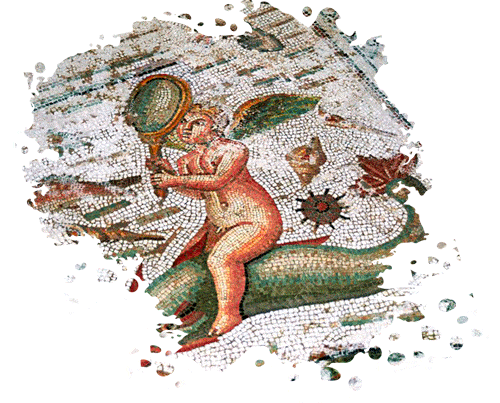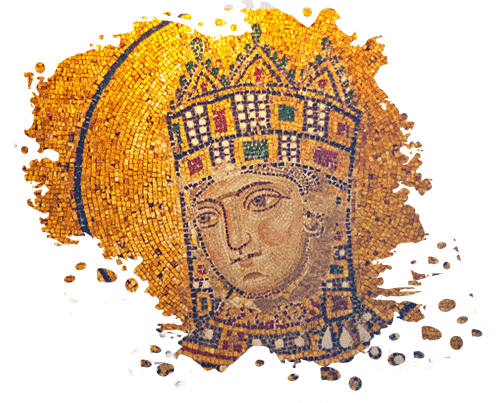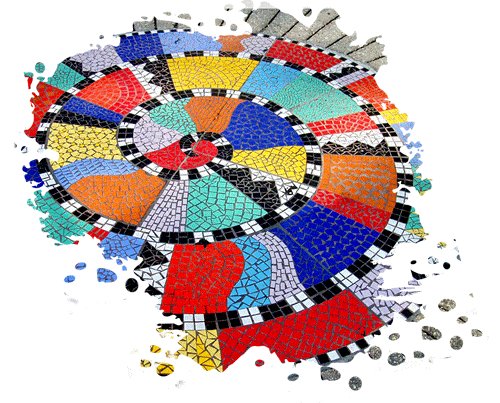
Different Types of Mosaics and Where They Can Be Found
Mosaics are one of the oldest and most fascinating forms of artistic expression. Found in ancient temples, medieval churches, Islamic palaces, and even modern homes, mosaics are a testament to human creativity across cultures and centuries. However, not all mosaics are created the same; different techniques, materials, and styles have emerged worldwide, each with its own story to tell.
In this blog post, we’ll explore the different types of mosaics, their unique characteristics, and where you can find some of the most breathtaking examples.
Types of Mosaics and Where They Can Be Found
1. Pebble Mosaics
What it is:
Pebble mosaics are one of the oldest forms of mosaic art. They are made by embedding smooth, naturally rounded pebbles into mortar or a prepared bed. These pebbles are often selected based on their size, color, and texture to create detailed scenes, patterns, and borders. The simplicity of materials contrasts with the remarkable intricacy of designs — from geometric patterns to mythological depictions.
Where to find it:
-
Ancient Greece: Pebble mosaics became prominent around the 5th century BCE. In places like Olynthus, homes were decorated with these mosaics, showcasing scenes of hunting, mythological creatures, and elaborate borders.
-
Pella, Macedonia: As the birthplace of Alexander the Great, Pella boasts some of the most sophisticated pebble mosaics, using shading techniques to create a three-dimensional effect — a significant innovation at the time.
Fun Fact:
Early Greek pebble mosaics were initially monochrome (usually black and white), but later evolved to include colored stones for more lifelike and dynamic compositions. They served not only an aesthetic purpose but also helped protect floors from heavy foot traffic and moisture.

2. Roman Mosaics
What it is:
Roman mosaics are typically composed of thousands of small pieces called tesserae, made from colored stones, glass, ceramics, or shells. These mosaics adorned the floors, walls, and ceilings of villas, bathhouses, and temples. Roman artists mastered perspective and shading, producing highly detailed and realistic images.
Where to find it:
-
Pompeii, Italy: Frozen in time after the eruption of Mount Vesuvius, Pompeii is a treasure trove of Roman mosaics. Some, like the famous “Alexander Mosaic” from the House of the Faun, show incredible detail and narrative complexity.
-
Hisham’s Palace, Palestine: Though built under Islamic rule in the 8th century, this palace contains extensive floor mosaics influenced by Roman and Byzantine traditions. The Tree of Life mosaic here is one of the most celebrated examples.
-
Tunisia: The Bardo National Museum in Tunis has the world’s largest collection of Roman mosaics, illustrating gods, legends, and scenes from everyday Roman life.
Fun Fact:
Roman mosaics weren’t just decorative; they often conveyed messages of wealth, education, and cultural refinement. Wealthy citizens would commission mosaics to display their status and knowledge of classical myths.

Create Your Own Masterpiece in Fes!
Step into the heart of Fes and discover the magic of traditional Moroccan mosaics!
Join our hands-on Mosaic Workshop, where you’ll learn ancient techniques from skilled artisans, craft your zellige masterpiece, and take home a unique piece of Moroccan heritage.
No experience needed, just your creativity and curiosity!
3. Byzantine Mosaics
What it is:
Byzantine mosaics marked a shift toward more spiritual and symbolic art. Artists used small glass tesserae, often backed with gold or silver leaf, to create dazzling mosaics that reflected light and evoked a sense of divine presence. The themes often focused on Christ, the Virgin Mary, saints, and Biblical narratives.
Where to find it:
-
Hagia Sophia, Istanbul: Built in 537 AD, Hagia Sophia showcases the grandeur of Byzantine mosaics. Although many were later covered during the Ottoman period, several magnificent pieces, like the Deesis mosaic, have been uncovered and restored.
-
Ravenna, Italy: Ravenna became a center of Byzantine mosaic art after the fall of Rome. Sites like the Basilica of San Vitale and the Mausoleum of Galla Placidia are celebrated for their vibrant colors and masterful figures.
-
Monreale Cathedral, Sicily: The cathedral’s vast golden mosaics depict Old and New Testament scenes across the walls and ceilings, blending Byzantine, Arab, and Norman artistic traditions.
Fun Fact:
Because of the reflective qualities of the gold-backed glass tesserae, Byzantine mosaics seemed to shimmer and change depending on the light source and angle, creating a mesmerizing effect designed to inspire awe among worshippers.

4. Islamic Mosaics
What it is:
Islamic mosaics developed a distinctive style rooted in aniconism — the avoidance of depicting human or animal forms in religious art. Instead, Islamic artists explored geometry, symmetry, arabesques, and intricate calligraphy. Using glazed ceramic tiles, a technique called zellige (or zillij), they created mesmerizing patterns that seem infinitely complex.
Where to find it:
-
Alhambra, Spain: The Alhambra palace complex in Granada is a masterpiece of Islamic architecture. Its intricate mosaic tilework, carved stucco, and muqarnas ceilings create a sense of infinite beauty and divine order.
-
The Great Mosque of Damascus, Syria: Built in the early 8th century, the mosque features mosaics depicting lush paradisiacal gardens, symbolizing eternal paradise.
-
Fes, Morocco:
Fes is one of the most important centers for traditional Islamic mosaic art — particularly zellige craftsmanship.
In the ancient medina (a UNESCO World Heritage site), artisans still follow centuries-old techniques, hand-chiseling each tile (known as furmah) into precise shapes before assembling them into geometric masterpieces.
The Bou Inania Madrasa and Al-Attarine Madrasa are stunning examples, featuring intricate zellige panels, carved cedarwood, and elaborate plasterwork.
Fes remains the heart of Moroccan mosaic production, supplying exquisite zellige tiles to palaces, mosques, riads, and modern projects worldwide.
Fun Fact:
Creating a traditional Moroccan zellige mosaic requires extraordinary patience: after individually shaping the tiny pieces, artisans assemble the designs face-down, without seeing the final pattern until it’s complete — a true test of skill and memory.

5. Modern and Contemporary Mosaics
What it is:
Today, artists reinterpret mosaics by using unexpected materials — broken glass, mirrors, bottle caps, metal scraps, and found objects — pushing the boundaries of what mosaics can be. Themes range from community empowerment to personal storytelling and abstract art.
Where to find it:
-
Park Güell, Barcelona: Antoni Gaudí reimagined mosaics as organic extensions of architecture. Using a technique called trencadís (broken tile mosaic), he decorated benches, fountains, and structures with colorful, swirling designs that mimic nature.
-
Philadelphia’s Magic Gardens, USA: Artist Isaiah Zagar transformed an abandoned lot into a whimsical world of mosaics, mirrors, poetry, and folk art, creating an immersive experience for visitors.
-
Street Art Projects Worldwide: Cities like Lisbon (Portugal), São Paulo (Brazil), and Valparaíso (Chile) have embraced mosaics as public art, beautifying staircases, walls, and even entire neighborhoods with vibrant, community-driven projects.
Fun Fact:
In contemporary art, mosaics have found new life not only in public installations but also in fashion, furniture design, and jewelry, proving that this ancient art form remains as dynamic and relevant as ever.

Final Thoughts
Mosaics are much more than decorative art, they are visual storytellers that have survived empires, religions, and artistic revolutions. Whether you’re walking through the ruins of a Roman villa, standing in awe beneath the golden ceilings of a Byzantine church, or snapping selfies at a Gaudí masterpiece, you’re connecting with a tradition thousands of years old.
Next time you see a mosaic, take a moment to think about the hands that placed every tiny piece. Each tessera tells a part of a story, and together, they form a legacy of beauty that transcends time.
